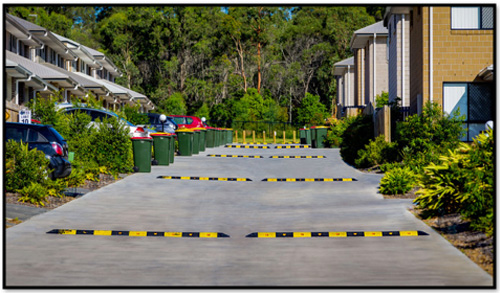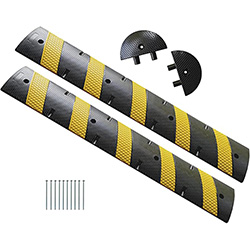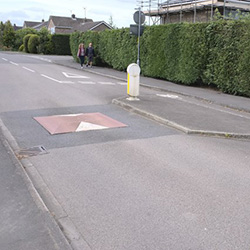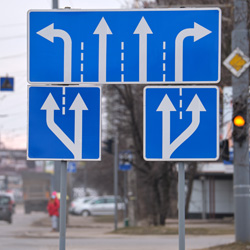Introduction
Speed bumps may seem like a small and inconsequential part of our roads, but they play a crucial role in ensuring our safety. As drivers, we have all encountered these traffic calming measures, designed to slow down our speed and make our roads safer. However, their impact on both drivers and pedestrians is often underestimated. In this article, we will explore the benefits and challenges of using speed bumps as a road safety measure. By understanding their purpose and effects, we can better appreciate their role in creating a safer environment for all road users. So, let’s dive in and learn why slowing down for safety with speed bumps is essential.
Understanding the Purpose of Speed Bumps
Speed bump are a common sight on many roads and serve an important purpose in promoting road safety. These raised structures are designed to slow down vehicle speed and reduce accidents and injuries. There are various types of speed bumps, including flat top, round top, and speed humps, each with their own effectiveness in controlling vehicle speed. According to statistics, the use of speed bumps has been successful in reducing accidents and injuries on roads.
While speed bumps serve an important purpose, their impact on drivers cannot be ignored. The sudden jolt and potential damage to vehicles can be inconvenient for drivers. Therefore, proper placement and design of speed bumps is crucial in minimizing negative effects on drivers. Examples of successful implementation of speed bumps that have not caused major inconvenience to drivers can be seen in many cities.
In addition to drivers, speed bumps also have a positive impact on pedestrians. These structures not only slow down vehicles, but also provide a safer environment for pedestrians, especially those crossing the road. Speed bumps also promote a more pedestrian-friendly environment, making it easier and safer for people to move around on foot.
While speed bumps have proven to be effective in promoting road safety, there are also challenges associated with their use. Increased noise and air pollution, as well as hindrance to emergency services, are some potential drawbacks to consider. However, these challenges can be addressed through proper design and implementation of speed bumps. It is important to consider these factors and find solutions to minimize their impact.
Although alternative methods such as traffic cameras and speed limits also play a role in controlling vehicle speed, the combination of different approaches is essential for effective road safety. Speed bumps, along with other measures, can make a significant difference in creating safer roads for both drivers and pedestrians.
Impact on Drivers
Speed bumps have a significant impact on drivers, as they are designed to slow down traffic and reduce vehicle speed. However, there are also potential challenges that need to be considered. One of these is the potential for damage to vehicles, especially if the speed bumps are not properly designed or maintained. This can be a major inconvenience for drivers, and in some cases, can even result in accidents. To minimize these negative effects, it is crucial to ensure proper placement and design of speed bumps. This includes considering the size, shape, and height of the speed bumps to avoid causing damage to vehicles. Additionally, successful implementation of speed bumps in certain areas has shown that they can be effective in controlling speed without causing major inconvenience to drivers. This highlights the importance of carefully planning and implementing speed bumps to achieve the desired results while minimizing negative impacts on drivers.
Impact on Pedestrians
Speed bumps not only benefit drivers, but they also have a significant impact on pedestrian safety. By slowing down traffic, speed bumps make crossing the road safer for pedestrians. According to a study by the Insurance Institute for Highway Safety, the presence of speed bumps can reduce pedestrian accidents by 45%. This is especially important in areas with high foot traffic, such as school zones and residential areas. In addition to directly increasing pedestrian safety, speed bumps also promote a more pedestrian-friendly environment. With slower and more cautious drivers, pedestrians feel more comfortable and confident when crossing the road. This ultimately leads to a more harmonious sharing of the road between drivers and pedestrians. However, it is crucial to ensure proper placement and design of speed bumps to minimize any negative effects on pedestrians, such as increased noise and air pollution.
Challenges of Speed Bumps
While speed bumps are an effective way to control vehicle speed and promote road safety, they do come with their own set of challenges. One of the main concerns is the potential for increased noise and air pollution, caused by vehicles accelerating and decelerating over the bumps. This can also lead to inconvenience for drivers, especially in high-traffic areas. Additionally, speed bumps may pose obstacles for emergency services, potentially delaying their response time in case of an emergency. It is important to consider these challenges in the design and placement of speed bumps to minimize their negative effects. Solutions such as using modern design techniques and implementing speed humps instead of traditional speed bumps can help alleviate some of these challenges. By addressing these concerns, we can ensure that speed bumps continue to be an effective tool for promoting road safety.
Alternative Solutions for Road Safety
Aside from speed bumps, there are other methods available to control vehicle speed on the roads. These include traffic cameras and speed limits. While these methods may seem more convenient for drivers, they also have their own set of challenges. For example, traffic cameras can be expensive to install and maintain, and speed limits may not always be followed by drivers.
However, it is important to note that these alternative solutions can be used in conjunction with speed bumps for maximum effectiveness. By using a combination of methods, we can create a safer environment for both drivers and pedestrians. Additionally, speed bumps can still be strategically placed in areas where there is a high risk of accidents, while traffic cameras and speed limits can be used to enforce overall speed control on the roads.
Ultimately, the key to road safety is to find a balance between effectiveness and convenience for all parties involved. By considering all available solutions and carefully implementing them, we can ensure a safer and more efficient road system for everyone.
Conclusion
In conclusion, speed bumps are an effective and necessary tool in promoting road safety. By controlling vehicle speed and increasing pedestrian safety, they play a crucial role in creating a more secure environment for everyone on the road. While there may be some challenges to consider, such as potential inconvenience for drivers and increased noise pollution, these can be addressed through proper design and placement. It is important to remember that a combination of different measures, including speed bumps, is necessary for effective road safety. As we continue to navigate the challenges of modern transportation, let us not forget the importance of slowing down for safety and the vital role speed bumps play in achieving this goal.









